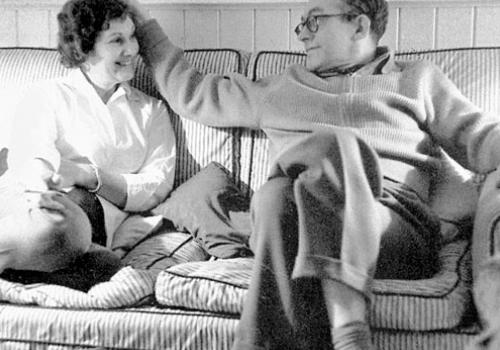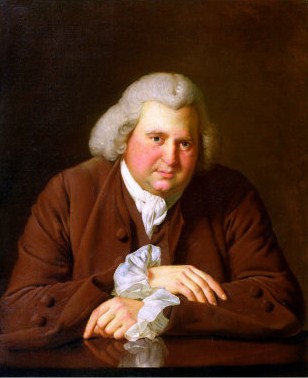
Farrago alert! The WR has invited Frank Sidgwick back to test your literary wits again. Perhaps you might try googling the answers this time.
Okay, here’s the ‘literary arithmetic’ puzzle. The result of multiplying (a) the number of our family by (b) Maisie’s braw pall-bearers, diminished by (c) half the number of love-sick maidens is (d) the number of years that she was approaching when her lover was nearly (e) aged a number of years which added to one-third of the difference when (f) the total of those who shall plough no more and (g) the riders into the valley equals the results of multiplying (h) the Affable Kinsmen by (i) the sisters of Sussex. In (d) – you’re not getting off that lightly! – be sure and identify the ‘She’, giving both married and maiden names.
While you’re lying down, let me assure you that the prize will go to the neatest and briefest correct answer.
Personally, I think I can do just one of these, without so much as a search engine. (g) must be the Light Brigade’s 600 (‘not a poem on which I pique myself’ – Tennyson). I would have guessed (h) as 2, and I would be right, but for the same wrong reason as the winner.

A clue to (f)
I’ll take you through these in a minute, but nobody got this all right. One person, hiding behind the name Lilian, reached the correct solution, but only because, like me, she (or he) reckoned the Affable Kinsmen were the Noble ones. There are two of each, fortuitously.
Personally, I think (a) gets us off to a bad start. Whose family? Is it The Swiss Family Robinson? The Bennets? No – more mawkish than that. Sidgwick is a Wordsworth fan, and he is alluding to this. I will spare any readers the whole poem, but here is the computing part of it:
“The first that died was sister Jane;
In bed she moaning lay,
Till God released her of her pain;
And then she went away.
“So in the church-yard she was laid;
And, when the grass was dry,
Together round her grave we played,
My brother John and I.
“And when the ground was white with snow,
And I could run and slide,
My brother John was forced to go,
And he lies by her side.”
“How many are you, then,” said I,
“If they two are in heaven?”
Quick was the little Maid’s reply,
“O Master! we are seven.”
“But they are dead; those two are dead!
Their spirits are in heaven!”
‘Twas throwing words away; for still
The little Maid would have her will,
And said, “Nay, we are seven!”
So 7 has to be multiplied by the number of Maisie’s braw pall-bearers. What Maisie Knew? No, and braw suggests Scotland. Here is Frederick Anthony Sandys’ much later picture of the right Maisie:
 The poor wee lass is subjected to burial in Chapter XL of Sir Walter Scott’s Heart of Midlothian (oh yes, of course). She appears in the deathbed song of ‘lunatic’ ‘maniac’ Madge Wildfire, a cigarette card of whom (really) you can see here
The poor wee lass is subjected to burial in Chapter XL of Sir Walter Scott’s Heart of Midlothian (oh yes, of course). She appears in the deathbed song of ‘lunatic’ ‘maniac’ Madge Wildfire, a cigarette card of whom (really) you can see here
“Proud Maisie is in the wood,
Walking so early;
Sweet Robin sits on the bush,
Singing so rarely.
“‘Tell me, thou bonny bird.
When shall I marry me?’
‘When six braw gentlemen
Kirkward shall carry ye.’
“‘Who makes the bridal bed,
Birdie, say truly?’—
‘The grey-headed sexton,
That delves the grave duly.
“The glow-worm o’er grave and stone
Shall light thee steady;
The owl from the steeple sing,
‘Welcome, proud lady.'”
7 times 6 = 42.
(c) will be easy if you like Gilbert and Sullivan (it’s Sullivan I’m not keen on), and, particularly, Patience – an apt choice for this puzzle. The answer is that there are twenty love-sick maidens and you can hear (and see) them here. Half that number is ten (I’m good at this.)
42-10 = 32.
Now we stray into algebra, I think. I confess that I don’t understand the question, quite (and I have the answer!). Let’s plough on.
(d) The number of years she was approaching … ummm … all right, it’s from a humorous poem by C.S. Calverley (‘humorous’) that you can read here – these are the key verses:
She was a blushing, gushing thing;
All—more than all—my fancy painted;
Once—when she helped me to a wing
Of goose—I thought I should have fainted.
The people said that she was blue:
But I was green, and loved her dearly.
She was approaching thirty-two;
And I was then eleven, nearly.
(Calverley was born in 1831 and died in 1884. His complete works – he is a sort of minor Hood – were published in 1901, and are here. You’ll have spotted from his poem that the nearly-32 year-old is Miss Anna Poser, but becomes Mrs. Horace Nibbs. Bear that in mind.)
So a + b – (c ÷ 2) = 32, which = d – 32 (yes!) – when
11 is added to [(f – g) ÷ 3].
Okay I’ve given you a clue to (f). We need, of course, to turn to the poem On The Loss of the Royal George, by William Cowper. That’s here and is based on an event in 1782 described here, but, more importantly, those who will plough (the waves) no more are in the last two lines:
Weigh the vessel up,
Once dreaded by our foes,
And mingle with your cup
The tears that England owes;
Her timbers yet are sound,
And she may float again,
Full charg’d with England’s thunder,
And plough the distant main;
But Kempenfelt is gone,
His victories are o’er;
And he and his eight hundred
Must plough the wave no more.
I hope you don’t make that 800. Don’t forget ‘he’. The total is 801, and we already know (g) is 600 from The Charge of the Light Brigade.
So 11 is added to [(f – g) ÷ 3] becomes 11 added to (801 – 600) ÷ 3 = 201 ÷ 3 = 67. So 11 + 67 = 78.
The first sum, then, is 32, when the second is 78: that’s what it looks like, providing (h) by (i) also equals 78.
Now you and I are simpletons. We see Kinsmen, we think ‘obscure maybe-Shakespeare play’, Two of them, don’t we? This is where the winner slipped, too. Sidgwick says he’s ‘gravelled’ (great word) that no-one’s heard of the Two Affable Kinsmen. ‘Does no-one read The Wrong Box any more?’ he asks. No, not in 1932, and not now, either.
It’s here, it’s an 1889 novel by Robert Louis Stevenson and his stepson Lloyd Osbourne – they collaborated three times – and is a black comedy which highly amused, among others, as Sidgwick mentions, Rudyard Kipling (‘I laughed over it dementedly,’ he wrote in a letter, and in his autobiography he was still claiming he could get 75% in a viva on it. Sidgwick also credits the Headmaster of Eton with being a fan. In 1932, that was Cyril Argentine Alington, a much published novelist and writer of memoirs and also hymns). To my amazement, it provides the plot for the 1966 Bryan Forbes film The Wrong Box (Michael Caine et al), which I certainly recall, and the trailer for which you can see here.

Here is the key passage:
‘Oho!’ said Michael queerly. ‘You say your uncle is dangerously ill, and you won’t compromise? There’s something very fishy about that.”What do you mean?’ cried Morris hoarsely.’I only say it’s fishy,’ returned Michael, ‘that is, pertaining to the finny tribe.’
‘Do you mean to insinuate anything?’ cried Morris stormily, trying the high hand.
‘Insinuate?’ repeated Michael. ‘O, don’t let’s begin to use awkward expressions! Let us drown our differences in a bottle, like two affable kinsmen. The Two Affable Kinsmen, sometimes attributed to Shakespeare,’ he added.
So – let’s wrap this up – the answer is 2 and must be multiplied by the sisters of Sussex, in the hope that we will find the answer 78 again. I hope you’re following. We are looking, are we not, for 39 sisters of Sussex? Those of you at the back who are concentrating will realise we have
already had a competition about Sussex poems. It’s Kipling, and the lines are:
Though all the rest were all my share
With equal soul I’d see
Her nine-and-thirty sisters fair,
Yet none more fair than she.
(We are talking counties, not girls, note.) The original is
here.
So 32 is 32, when 78 is 78. That’s it! Here’s Lilian’s neat summary:

To be fair, someone called
Quint (an occasional also-ran) has almost won, and his not-correct entry is awarded the half-guinea, although not printed.
For 132B, Sidgwick wants epigrams distinguishing Holyrood from Hollywood; suburbia from Siberia; and the Decalogue from the Decameron. Sidgwick hands out three prizes, to
Tarsius,
Jean Anderson and
W.G., but also prints a generous selection of also-rans (some of them better than the winners, I think).



One of the runners-up, Walter Edward Bonhote Henderson (1880-1944), known by the nickname ‘Herkers’, was not only a poet who had published two volumes (you can read his first, in 1908, here) and a novelist (one novel, Behind the Thicket) and short story writer, but also an Olympic athlete – certainly in 1908, when he came eighth in the standing high jump competition, and 1912; in 1920 he won the trials but was not picked. He was a hammer and discus thrower, too, and had set the UK discus record in 1912 (128ft 4½in – not surpassed till 1928). In fact, the striking thing about him was the longevity of his athletic career. He began by representing Oxford against Cambridge in five sports (add the shot put and javelin) between 1900 and 1903, and in 1900, won the high jump. A full 23 years later, he came second in the discus at the AAA championships, and was selected to play for England against France, even though he was over 43. He was one of those rare unfortunates who was reported to have died (in 1943) when he was still alive: the Times obituary said of him that “his classic head and beautifully proportioned body suggested Apollo rather than Hercules”. He worked in the solicitors’ department of the Ministry of Labour.











